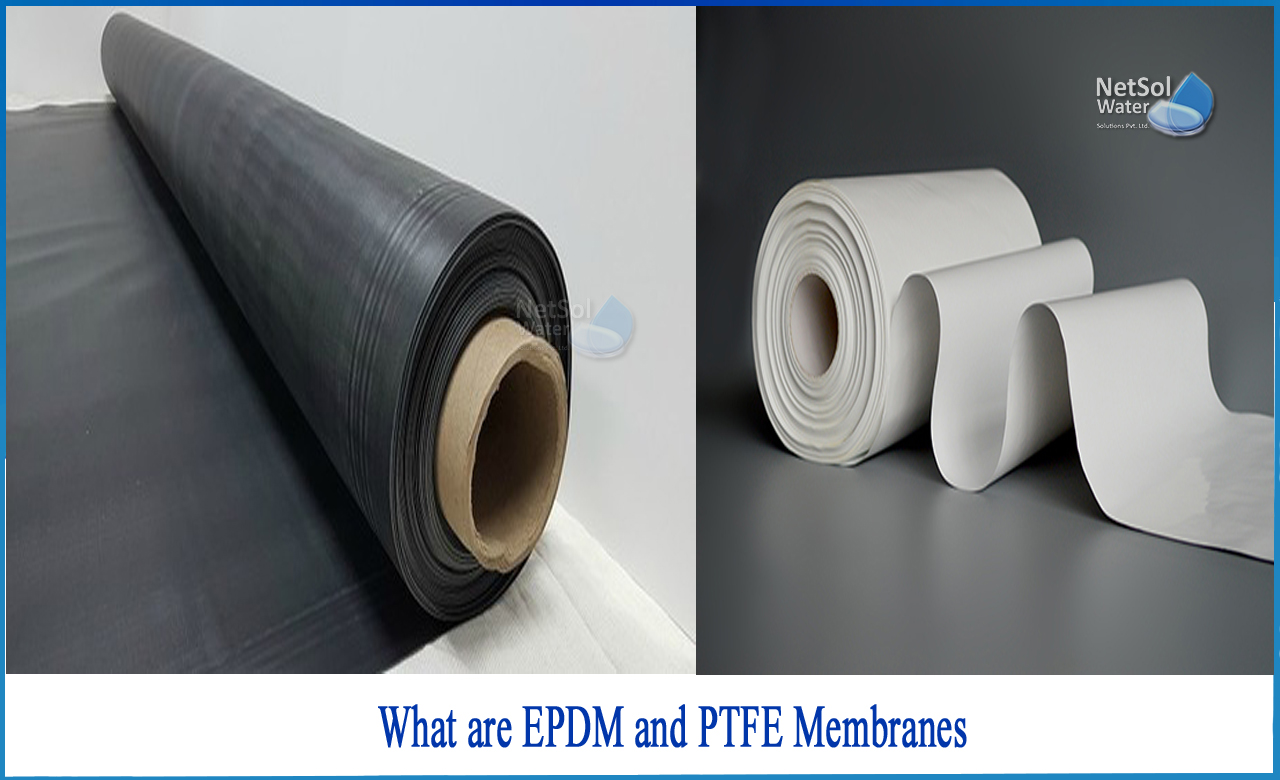What are EPDM and PTFE membranes?
EPDM membranes
A wastewater aeration diffuser membrane made of EPDM rubber, a synthetic rubber composed of ethylene, propylene, and a diene monomer, is known as an EPDM membrane. It has a low density and a large heat capacity.
How do they work?
EPDM membranes function by being fitted over an aeration diffuser, which generates tiny bubbles through small perforations on the membrane surface. The microscopic orifices are flexible enough to expand to generate a bubble and then constrict to prevent water backflow since EPDM is rather soft and elastic. The little bubbles allow aeration to take place by transferring oxygen to the wastewater column.
Benefits of EPDM Membranes
1: EPDM has a saturated polymer backbone, which makes it resistant to heat and light and allows it to withstand high water temperatures, steam, and bright circumstances.
2: EPDM membranes have a long lifespan and can withstand the heat of industrial effluent for years without degrading. They're also resistant to the effects of harsh weather.
3: EPDM membranes are effective with a wide range of chemicals, including polar compounds like water, alkali substances, and even some hydraulic fluids found in wastewater.
4: EPDM membranes are more cost-effective.
5: EPDM membranes are a good choice for plants that need to keep their aeration diffusers on a restricted budget since they provide reliable performance at a cheaper cost.
What are PTFE membranes and why do we need them?
PTFE is a thermoplastic polymer. It's comprised of fluorine-containing synthetic polymers and is noted for its hardness and self-lubricating properties. Teflon is one of the most well-known PTFE materials, thanks to its non-stick qualities. PTFE has a comparatively low tensile strength and a relatively high density.
PTFE has a variety of applications in a variety of industries; its non-stick characteristics are even useful in hospital equipment to inhibit bacteria aggregation and reduce the danger of hospital infections.
PTFE membranes are harder than EPDM membranes due to their density. Because their surfaces are more difficult to penetrate, they can withstand disintegration and foiling.
How does PTFE membranes work?
PTFE membranes act similarly to EPDM membranes in that they produce small bubbles through microscopic holes in the membrane surface. The bubbles aid aeration by mixing the water and transferring oxygen.
A protective PTFM coating is often applied over an inner layer of EPDM in PTFE membranes. This multilayer structure can assist conserve old EPDM membranes by providing an extra coating rather than replacing them fully, which would be costly both financially and in terms of time. It has a higher cost-effectiveness than just utilising PTFE.
Benefits of PTFE membranes
1: Decreased fouling and cleaning frequency: When compared to EPDM membranes, PTFE membranes can assist in slowing the rate of membrane fouling by a factor of five to ten. The non-stick qualities of PTFE make it difficult for organic materials to attach to and collect on the PTFE surface, giving it this advantage. Because of this feature, PTFE membranes require less cleaning than EPDM membranes.
2: Fewer negative ageing effects: As PTFE ages, it is less prone to exhibit plasticizer creep or a reduction in the bubbling area. For consistent aeration performance, old, used PTFE membranes keep their reliable OTE.
3: Reduced swelling: As previously stated, when EPDM membranes are left stationary in water, they tend to swell and split. Because of their hydrophobic qualities, PTFE membranes are far less susceptible to this impact.
Studies were carried out in a variety of businesses, including perfumeries, textile mills, paper mills, pharmaceutical plants, oil refineries, and municipal wastewater treatment plants. The PTFE membranes did not bulge, break, or distort as EPDM membranes did in any of these conditions.
Conclusion
Partner with Netsol Water for the highest-quality membranes in the market. Netsol can install new aeration diffuser systems or retrofit an existing system with contemporary membrane updates.



